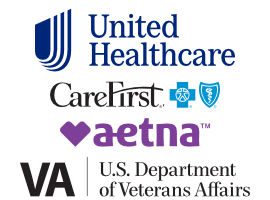Originally Published: Pathways Magazine, Spring 2015
Within the practice of Eastern medicine, there are a variety of traditions or schools of thought, and each approaches the preparation of a diagnosis and treatment plan from a slightly different theoretical base. Although each tradition may approach acupuncture or Chinese herbal treatment differently, many of them have a foundation in the Eight Principles. This makes the Eight Principles one of the most prevalent schools of thought in acupuncture and Eastern medicine.
Table of Contents
History of the Eight Principles
The concept of the Eight Principles dates back to one of the original Chinese medical classics – the Huangdi Neijing, which was published between 475-221 BCE. However, the term “Eight Principles” did not appear in medical texts until the Qing dynasty (1644-1912). The basic theory behind the Eight Principles is founded in the following eight dualities:
| Yin Interior Cold Empty | Yang Exterior Hot Full |
Understanding The Principle As A Whole
The Eight Principles are meant to be interpreted together as a whole, and this creates a difficulty in attempting to explain parts separately. It’s important to understand that the purpose of these articles is to empower the reader with the knowledge to understand terminology being used by their acupuncturist or Eastern medical professional. The symptoms, diagnoses and examples presented in these articles are in no way a replacement for the expertise of a licensed acupuncturist or Eastern medical practitioner.
Interior and Exterior
In Eastern medicine, Interior and Exterior refer to the location of the disorder rather than its cause. There are both internal and external causes of disease, but these causes are not considered to be Interior or Exterior when discussing the Eight Principles. When a disease is classified as Interior or Exterior, it directly refers to the location of the disease or pattern of disharmony.
Exterior
Exterior refers to the location between the muscles and the surface of the skin. This is the area where “Wei Qi” or “Defensive Qi” reside. Wei Qi is the first level of defense against an external pathogenic factor. Exterior conditions affect the skin, muscles, sinews, and channels (meridians).
Interior
Interior conditions are a disharmony that is lodged in an affected organ. Any condition that cannot be classified as Exterior might be considered an Interior condition. However, the most important aspect in determining an Interior condition is that the disharmony affects one of the twelve organs as listed below.
| Yin Organs Lungs Spleen Heart Kidneys Pericardium Liver | Yang Organs Large Intestine Stomach Small Intestine Bladder San Jiao Gallbladder |
While many of these organs seem familiar to most people, there are two organs that may be unfamiliar – the Pericardium and the San Jiao.
The pericardium is a sac that encloses the heart in western medicine. However, the Pericardium is known as the protector of the Heart in Eastern medicine, and it is related to emotional matters of the heart. The San Jiao is not directly related to an organ system in western medicine. One translation of san jiao is “three burners.” These burners are the chest, abdomen, and lower abdomen, and all three are responsible for regulating the environment within the body including temperature and fluid distribution.
Medical Application
The symptoms that a patient exhibits are used to determine the location of the disharmony. Exterior conditions show symptoms that affect the skin, muscles, sinews, and channels of the body, whereas Interior conditions show symptoms that affect one of the twelve organs.
Exterior Patterns
Exterior patterns can be broken down into two categories. One pattern with an acute, rapid onset affects the skin, sinews, and muscles, and one with an acute, slow onset, which affects the channels.
The signs and symptoms of an Exterior condition are difficult to simplify because an exact diagnosis depends upon the use of other determining factors. These factors include whether the pattern of disharmony is Hot/Cold and Full/Empty in origin. However, there are a few general symptoms that indicate an exterior condition, and these are listed below:
General Exterior Symptoms
- Acute onset
- Fever
- Achy body
- Stiff neck
- Aversion to cold (Disliking the Cold)
One example of an Exterior condition is the common cold. While there are different presentations of the common cold, the symptoms are used to determine the appropriate course of treatment.
Suppose three patients present with key Exterior symptoms: fever, body aches, and aversion to cold. However, one has a stiff neck; another has a sore throat and a headache; and another has wheezing and is not sweating. All of these conditions are considered Exterior because of the similar presentation of key symptoms. However, the treatment may be different because of the type of external pathogenic factor.
Years ago, a patient visited our clinic exhibiting fever, body aches, aversion to the cold, headache, sneezing, and sore throat. Based on these symptoms as well as physical assessments including tongue and pulse diagnosis, the patient was diagnosed with wind-heat affecting the Exterior. The patient was treated with a cupping technique on the back and was prescribed a Chinese herbal formula specifically designed for this condition. The patient recovered and the symptoms disappeared within 24-48 hours and did not miss any time off from work.
Interior Patterns
Since Interior patterns affect one of the twelve organs, there is no possible way to generalize how symptoms of an Interior condition might manifest. An exact diagnosis of an Interior condition also relies on whether the pattern of disharmony is Hot/Cold and Full/Empty in origin.
General Interior Symptoms
- Depends on the affected Organ
An example of an Interior condition is constipation. Constipation can be chronic or acute and the exact symptoms can vary.
Suppose one patient has habitual constipation with frequent urination; another patient has habitual constipation with lusterless skin and nails; and another patient has constipation with a high fever and burning in the anus. While it is clear that all of these conditions affect the large intestine, they vary in the causes of the symptoms.
Many years ago, a patient entered my office asking for relief from chronic constipation. The constipation presented with dry mouth and lusterless skin and fingernails. Based on other reported symptoms as well as tongue and pulse diagnosis, the patient was diagnosed with constipation due to blood deficiency – a condition that affects the large intestine. This patient was prescribed a Chinese herbal formula and treated with acupuncture. The symptoms took several months of continuous treatment to begin resolving.
Pathology
Pathology relates directly to the cause of the disharmony. These causes can be broken down into two types of pathogenic influences: internal or external. They are referred to as an internal pathogenic factor or an external pathogenic factor. It is important to not confuse the cause of disharmony (internal pathogenic factor or external pathogenic factor) with the location of the disharmony (Interior or Exterior).
Exterior Conditions
Exterior conditions will almost always be caused by an external pathogenic factor. These factors include excess exposure to Wind, Cold, Heat, Damp, etc. An Exterior condition will not have an internal cause for a pattern of disharmony.
Interior Conditions
Interior conditions may be caused by either an internal pathogenic factor or an external pathogenic factor.
Internal pathogenic factors are caused by improper diet, overwork, emotional stress, or an imbalance between organ systems.
Exterior pathogenic factors are those that can cause Exterior conditions. An external pathogenic factor that goes untreated may result in the pathogen entering the interior of the body, thereby affecting the organs.
This transition from the Exterior to the Interior can be determined by the onset of disliking a warm environment (aversion to heat) and the loss of disliking a cool environment (aversion to cold).
Integrating Interior and Exterior Evaluations
While internal and external pathogens can be difficult for the general public to determine, medical practitioners who specialize in Eastern medicine are trained in deciphering the root cause of a pattern of disharmony.
The concepts of Interior and Exterior are utilized in many traditions and philosophies of Eastern medical thought. Diagnosing the location of a pattern of disharmony is vital to preparing an accurate plan of treatment.
Just as Yin and Yang were one duality pair of the Eight Principles, Interior and Exterior represent another duality pair. While Interior and Exterior are used to determine the location of a pathogen, this pair must be used in conjunction with the other pairs Eight Principles and other evaluation tools.
A Holistic Diagnostic Framework
In conclusion, the Eight Principles provide a foundational framework for understanding and diagnosing patterns of disharmony in Eastern medicine. By considering the dualities such as Interior and Exterior, practitioners can identify the location and nature of a condition, guiding them toward an appropriate treatment plan. While these concepts may seem complex, they offer a valuable lens through which both practitioners and patients can approach health, reinforcing the importance of holistic evaluation in the practice of acupuncture and traditional Chinese medicine.







